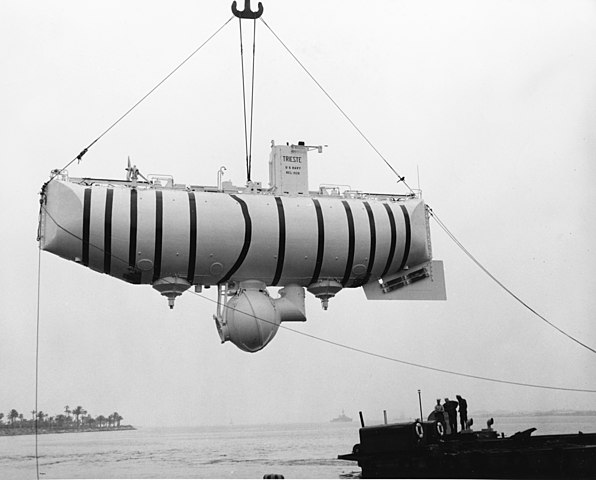
Why is the Mariana Trench so deep? The Mariana Trench is so deep because it has formed where the dense Pacific Plate has sunk underneath the less dense Philippine Sea Plate.
The Mariana Trench is well known as the deepest point on Earth. Its deepest point is 10,984 meters. The pressure at that depth is 1,071 times the pressure at sea level. That means the weight of the water is about 3 tons on every square cm. If you suddenly managed to teleport to the bottom of the Mariana Trench, you would be crushed into pulp and dust. Bones are stronger than concrete when subjected to pressure, but they cannot survive the pressure at the bottom of the Marian Trench. There are some organisms that can live at those depths. Snailfish have been found at over 8,000 m down, and a type of shrimp has been found that takes aluminium out of the water to make its shell stronger. Animals at this depth have to have several adaptations so that they can survive the incredible pressure.
The very first people to get to the bottom of the Mariana Trench were Don Walsh and Jacques Piccard. Since then, 22 crewed submarines have reached the bottom and 7 uncrewed submarines. It is sometimes said that it is harder to go to the bottom of the Mariana Trench than it is to go into space. Of course, the people who say that aren’t thinking of the rockets and all of the technology that is needed to get someone out of Earth’s orbit. You don’t need rockets to get to the bottom of the sea, you just need something that is heavier than water. They are talking about the pressure. A spacecraft doesn’t have to deal with external pressure. In space, the only pressure is inside the spacecraft and that is just one atmospheric pressure. Keeping a submarine intact under the immense pressure at the bottom of the Mariana Trench is not easy. To survive, the hull is made of 9 cm thick titanium. That should give you an idea of the pressure.
So, why is the Mariana Trench so deep? The Mariana Trench has been made in the same way as all valleys and mountains are made. When tectonic plates move, there are three things that can happen. They can collide, they can separate, or they can slide past each other. When plates move apart, they are filled with magma from the Earth’s mantle, and they form new crust. When plates move past each other, they usually cause earthquakes. We want to look at when two plates collide.
When two plates collide, they either sink or rise. This is all down to their density. The denser of the two plates will be heavier and it will naturally sink. The less dense of the two plates will be lighter, and it will usually rise over the other. A plate’s density is connected to its age. Plates are formed when magma rises up and cools. Young, just cooled magma is very light. As it ages and moves away from its source, it gradually cools and gets denser and heavier, slowly sinking down. In the case of the Mariana Trench, the Pacific Plate meets the Philippine Sea Plate. The Pacific Plate is 180 million years old at its edge and is much older than the Philippine Sea Plate. The Pacific Plate is one of the oldest undersea plates in the world and is therefore the densest. When the two plates meet, the Pacific Plate sinks underneath the Philippine Sea Plate and is pushed down, making the deep trench that is the Mariana Trench.
However, the plates are not the only reason that the trench is so deep. It doesn’t have much sediment at the bottom of it. Many other trenches that are closer to land get filled up with sediment that is washed out to sea by rivers. The Mariana Trench is too far from land to be affected by river sediment. Another reason is that the edge of the Pacific Plate has been slightly broken off by a fault line. This means the plate can bend much more steeply than would otherwise be possible. Usually, plates that are pushed under other plates go down at a shallow angle, but the Pacific Plate goes down very sharply and this makes the Mariana Trench deeper than might be expected. And this is what I learned today.
Try these next:
Sources
https://en.wikipedia.org/wiki/Mariana_Trench
https://www.livescience.com/23387-mariana-trench.html
https://www.bbc.co.uk/bitesize/articles/z4g3qp3#z6h2m39
Image By Unknown author – Retrieved from NH 96801 U.S. Navy Bathyscaphe Trieste (1958-1963), Art collection, U.S. Naval History and Heritage Command website. Released by the U.S. Navy Electronics Laboratory, San Diego, California., Public Domain, https://commons.wikimedia.org/w/index.php?curid=209622
